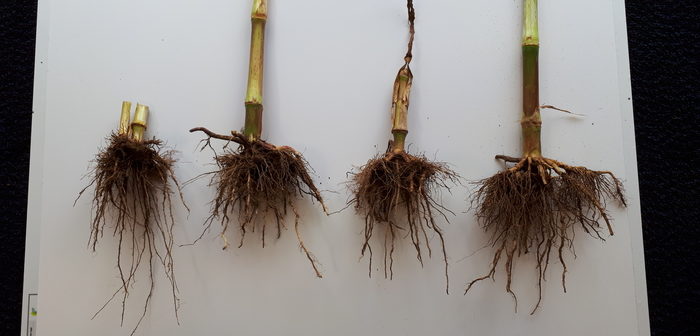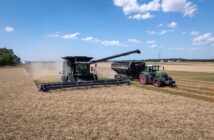The past few maize-growing years have seen lodging in some crops. John Burgess of plant breeder, KWS, offers some advice on how to minimise the risk at the start of the season.
There are three types of lodging that affect maize crops, explains Mr Burgess: “Root lodging indicates a lack of root anchorage, while green snap is due to wind and storm damage,” he says. “The third type is brackling, which is seen in an over-mature crop or as the result of late harvesting. At this time of year, there are steps which can be taken to avoid root lodging, which is the most common form of the problem.”
Seedbed preparation
“Maize will perform best in a soil pH level of between 6.5 and 7,” he adds. “High soil acidity in particular will lead to inadequate soil aeration, which in turn will affect root development. Excess nitrogen will also increase lodging risk, because plants will be weakened by rapid stem elongation and they may become top heavy due to high ear set.
“In addition, sufficient phosphate and potash levels are essential for a well-developed root system. The aim should also be to create a relatively fine seedbed, as cloddy material may prevent the coulter from reaching the optimum depth.”
Drilling
Shallow drilling is another cause of lodging and close attention should be paid to drill speed, depth and timing; poor drilling accuracy in particular will exacerbate lodging potential. Uniform seed placement will maximise root formation and create stronger stems, resulting in even light interception among individual plants.
“Seed placement is fixed at the point of drilling and therefore a check on drill calibration must be performed before sowing,” advises Mr Burgess. “For large maize acreages, especially where three or more maize varieties have been chosen, drills should be re-calibrated periodically. This can be carried out each morning, for example, before drilling begins for that day’s schedule.
“The thousand grain weight for maize seed varies between hybrids, and the seed rate that is chosen should reflect the hybrid type, so it is important to follow breeder recommendations.”
The main aim is to eliminate double plants, which will weaken root structure, he adds.
“Double plants will compete and will normally form two smaller ears, so yield and maturity will not be optimised along the row. Early spring drought following planting will also affect rooting, but of course this factor is out of farmers’ control.”
Drilling Depth Recommendations
- 5-5.5cms – early to mid-season (April to early May)
- 5-8.5cms – mid-season (early May onwards)
- Plants should be sown to a maximum of 9cms. Ensure that buttress roots are covered on 90% of the final plant stand, to optimise root anchorage.




